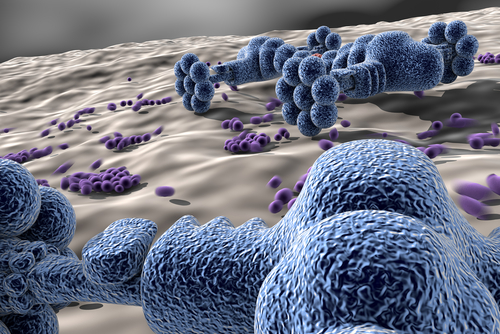 Cancer metastasis is the process by which tumors spread throughout the body, usually resulting in increased cancer aggressiveness and death.
Cancer metastasis is the process by which tumors spread throughout the body, usually resulting in increased cancer aggressiveness and death.
In 1995, Drs. Samuel Hellman and Ralph Weichselbaum, experts on cancer radiotherapy, proposed an intermediate state of cancer metastasis, and possibly a treatable state, between a localized and widespread tumor, which they called oligometastasis. The concept of oligometastasis has important implications for cancer treatment because patients with this type of tumor, i.e. with very few local secondary tumors, normally no more than 5, may be cured using localized cancer therapies such as high-dose radiotherapy or surgery.
Dr. Weichselbaum and colleagues published their results in the journal Oncotarget, where they reveal the biological mechanisms involved in oligometastasis. In this study, they analyzed all the genetic information collected from tumor samples obtained in the clinical trials that they previously performed and published.
The team identified small clusters of microRNAs expressed only by oligometastatic cells and demonstrated how certain microRNAs can bind to messenger RNA from specific genes and inhibit their expression. They found that the most important microRNAs were codified by a small chromosomal region known as 14q32, which is relevant for early embryonic development. Notably, mutations in this region have been associated with several diseases in children.
Importantly, they found that the genes inhibited by these microRNAs were involved in pathways important for the adherence, invasion and migration of tumors cells to other type of cells, the main characteristics of an aggressive tumor.
Dr. Weichselbaum stated in a news release that tumor cells that do not have the specific microRNAs from the 14q32 region are unable to adhere, invade, or migrate (AIM), originating less aggressive tumors that are usually treatable with local therapy.
The research team suggested that these microRNAs could be used as biomarkers to assess if a tumor is more or less aggressive and could help choose the most appropriate type of treatment used by the clinicians.
[adrotate group=”3″]
Using an animal model of breast cancer, the team identified 4 microRNAs from the 14q32 cluster that were associated with a good prognosis. The increased expression of these 4 microRNAs was associated with longer periods without tumor recurrence after removal of secondary tumors.
Furthermore, analyzing tumor samples from patients revealed that 60% of those with high expression of these 4 microRNAs had no metastatic recurrence after 5 years of follow-up. While 70% of those patients with lower microRNA expression had tumor recurrence, normally during the first year.
The authors concluded that these findings support their “hypothesis of oligometastasis as a clinical entity with biological mechanisms and molecular properties that may differ from polymetastatic disease (…) Our results set the stage for improved identification of patients with oligometastasis and guide the development of therapies to limit metastasis development.”

